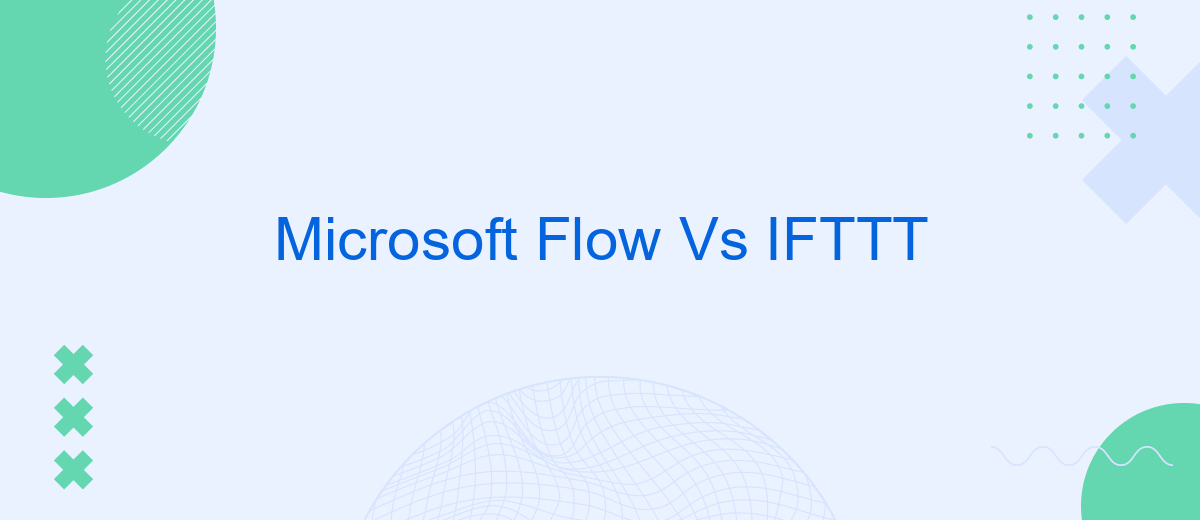In the rapidly evolving landscape of automation tools, Microsoft Flow and IFTTT stand out as two prominent solutions for streamlining workflows and enhancing productivity. While both platforms aim to simplify repetitive tasks, they offer distinct features and capabilities tailored to different user needs. This article delves into a comparative analysis of Microsoft Flow and IFTTT to help you decide which tool best suits your automation requirements.
Introduction
In today's fast-paced digital world, automation tools have become essential for streamlining workflows and enhancing productivity. Two popular options in this domain are Microsoft Flow and IFTTT. Both platforms offer robust solutions for connecting various apps and services, enabling users to automate repetitive tasks and focus on what truly matters.
- Microsoft Flow: A powerful tool integrated with the Microsoft ecosystem, ideal for business users.
- IFTTT: A versatile platform that connects a wide range of apps and devices, suitable for personal and professional use.
While both Microsoft Flow and IFTTT serve similar purposes, they cater to different audiences and use cases. Understanding their unique features and capabilities will help you choose the right tool for your needs. Additionally, services like SaveMyLeads can further simplify the process of setting up integrations, ensuring a seamless experience. In this article, we will delve into the key differences between Microsoft Flow and IFTTT, helping you make an informed decision.
Features

Microsoft Flow, now known as Power Automate, offers a robust set of features designed to automate workflows across various applications and services. It provides advanced capabilities such as multi-step flows, conditional branching, and integration with a wide range of Microsoft and third-party services. Users can create complex workflows that include approvals, notifications, and data collection, making it a powerful tool for business process automation. Additionally, Power Automate supports AI-driven automation, enabling more intelligent and efficient workflows.
IFTTT (If This Then That), on the other hand, focuses on simplicity and ease of use, allowing users to create basic automation tasks known as "applets." These applets link two services together with a simple trigger-action mechanism. While IFTTT may not offer the same depth of features as Power Automate, it excels in its user-friendly interface and extensive library of supported services. For those looking to integrate additional services seamlessly, tools like SaveMyLeads can be utilized to bridge gaps between IFTTT and various CRM systems, enhancing the overall automation experience.
Pricing

When comparing Microsoft Flow and IFTTT, pricing is a crucial aspect to consider. Both platforms offer different pricing models to cater to various user needs, from individuals to enterprises.
- Microsoft Flow: Microsoft Flow, now known as Power Automate, offers a free plan with limited functionalities. For more advanced features, users can opt for the paid plans starting at per user per month. The premium plans provide more comprehensive integration capabilities and higher usage limits.
- IFTTT: IFTTT offers a free version with basic functionalities suitable for casual users. However, for those requiring more robust automation, IFTTT Pro is available at .99 per month, providing advanced features such as multi-step applets and faster execution times.
For users looking for a more tailored solution for integrating various services, SaveMyLeads offers an alternative. SaveMyLeads simplifies the process of connecting different apps and services, providing a user-friendly platform with competitive pricing. This makes it an excellent option for businesses looking to streamline their workflows without breaking the bank.
User Interface

When comparing the user interface of Microsoft Flow and IFTTT, it becomes evident that each platform has its unique strengths. Microsoft Flow offers a more professional and complex interface, which may appeal to users with a background in IT or those who need advanced automation capabilities. The interface is highly customizable, allowing users to create detailed workflows with multiple steps and conditions.
On the other hand, IFTTT is designed with simplicity in mind. Its interface is clean and straightforward, making it accessible to users with little to no technical experience. This simplicity allows users to quickly set up applets, which are basic automation tasks, without the need for extensive customization.
- Microsoft Flow: Professional, complex, highly customizable
- IFTTT: Simple, clean, user-friendly
For those looking to integrate various services effortlessly, SaveMyLeads can be a valuable tool. It offers an intuitive interface that bridges the gap between complex and simple, allowing users to automate workflows without a steep learning curve. This makes it an excellent choice for businesses seeking to streamline their processes with minimal effort.
Conclusion
In conclusion, both Microsoft Flow and IFTTT offer powerful automation capabilities, but they cater to different user needs and environments. Microsoft Flow, now known as Power Automate, is ideal for businesses and professionals looking for advanced workflow automation within the Microsoft ecosystem. It provides robust integration with other Microsoft services and offers advanced features like conditional branching and detailed analytics.
On the other hand, IFTTT is more suited for personal use and simple automations. Its user-friendly interface and wide range of applets make it accessible for anyone looking to streamline everyday tasks. For those seeking an additional layer of customization and integration options, services like SaveMyLeads can further enhance the automation experience by connecting various platforms seamlessly. Ultimately, the choice between Microsoft Flow and IFTTT depends on your specific needs, technical expertise, and the complexity of the tasks you aim to automate.


FAQ
What are the primary differences between Microsoft Flow and IFTTT?
Which platform is better for business automation?
Can both Microsoft Flow and IFTTT be used together?
Is there a learning curve for using Microsoft Flow compared to IFTTT?
Are there alternatives to Microsoft Flow and IFTTT for automation and integration?
Are you using Facebook Lead Ads? Then you will surely appreciate our service. The SaveMyLeads online connector is a simple and affordable tool that anyone can use to set up integrations for Facebook. Please note that you do not need to code or learn special technologies. Just register on our website and create the necessary integration through the web interface. Connect your advertising account with various services and applications. Integrations are configured in just 5-10 minutes, and in the long run they will save you an impressive amount of time.
